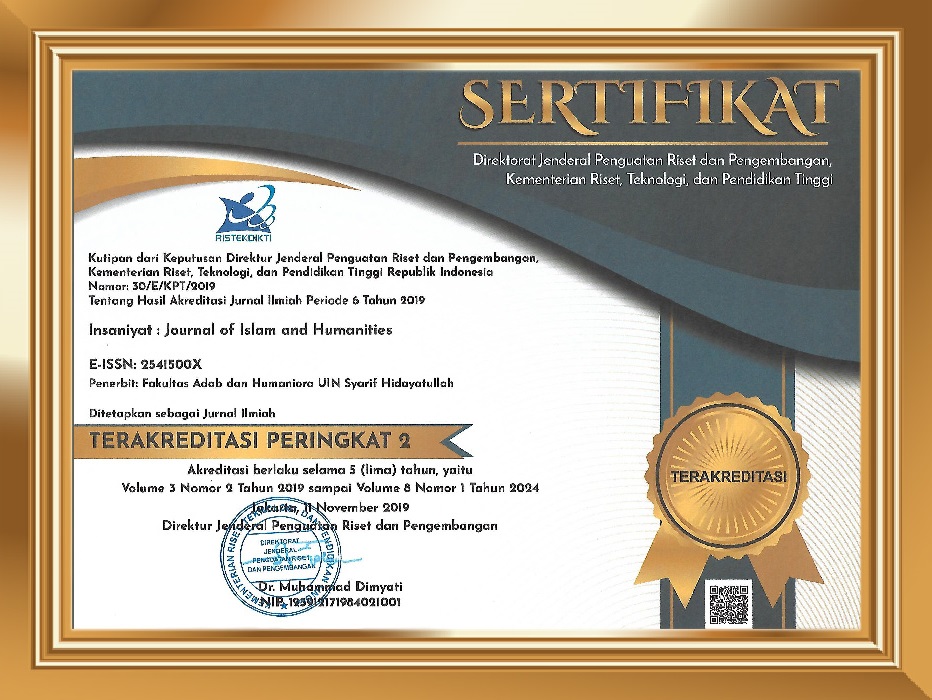Rhetorical Moves in Saint-Exupéry’s The Little Prince: A Genre Analysis
Abstract
Keywords
References
Abaalkhail, A. (2015). Rhetorical Moves in an Occluded Genre: A Qualitative Analysis of Suicide Notes. 125.
Baroni, R., & Revaz, F. (2016). Narrative sequence in contemporary narratology. Theory and Interpretation of Narrative. Retrieved from https://kb.osu.edu/handle/1811/75439
Bhatia, V. K. (1993). Analysing Genre: Language use in Professional Settings. New York: Routledge.
Connor, U. (2000). Variation in rhetorical moves in grant proposals of US humanists and scientists. Texts, 20(1), 1–28.
Conrad, J. A. (2014). The storied time of folklores. Western Folklore, 73(2/3), 323–352.
Dzikriya, U. (2019). Analysis of Actantial Model in Suzanne Collins’ ‘The Hunger Games’. Rainbow: Journal of Literature, Linguistics and Cultural Studies, 8(2), 85–94. https://doi.org/10.15294/rainbow.v8i2.34207
Frey, L., Botan, C., & Kreps, G. (1999). Investigating communication: An introduction to research methods. Cambridge: Pearson Education, Inc.
Gerot, L., & Wignell, P. (1995). Making sense of functional grammar (second). Sydney: Antipodean Educational Enterprises.
Hale, E., & Fox, M. A. (2013). Childhood and the environment in the little prince. Dalhousie Review, 93(2), 289–303.
Hyland, K. (2002). Genre: Language, context, and literacy. Annual Review of Applied Linguistics, 22, 113–135.
Joseph, R., Lim, J. M. H., & Nor, N. A. M. (2014). Communicative moves in forestry research introductions: Implications for the design of learning materials. Procedia-Social and Behavioral Sciences, (134), 53–69.
Labov, W. (1972). Language in the Inner City. Philadelphia: University of Pennsylvania Press.
Mesthrie, R., Swann, J., Deumert, A., & Leap, W. L. (2009). Introducing sociolinguistics. Edinburgh: Edinburgh University Press.
Mizzaro, A. (2023). The Little Prince : A Gylanic Boy looking for Partnership. (10), 54–59.
Nazeer, S. (2020). Nuances of spirituality and Resurrection in Saint Exupery’s the Little Prince. Iqbal Review - Journal of the Iqbal Academy Pakistan, 61(4), 95–106. Retrieved from http://iqbalcyberlibrary.net/en/IRE-OCT-2020.html#pdfdownload
Potočárová, M. (2017). The Educational and Moral Message in A . de Saint Exupéry`s The Little Prince. 20(4), 57–70.
Samraj, B., & Gawron, J. M. (2015). The suicide notes as a genre: Implications for genre theory. Journal of English for Academic Purposes, (19), 88–101.
Soy, S. (2020). The Theme of Humanism in ‘ The Prophet ’ and ‘ The Little Prince ’. 34–54.
Swales, J. (1990). Genre analysis: English in academic and research settings. Cambridge: Cambridge University Press.
Swales, J. (2004). Research genres: Explorations and applications. Cambridge: Cambridge University Press.
Swandari, F., & Markhamah. (2023). Moral Values in The Little Prince Novel as Character Education in Junior High Shools. Atlantis Press SARL. https://doi.org/10.2991/978-2-38476-086-2_69
Toolan, M. (2013). Language in literature: An introduction to stylistics. New York: Routledge.
Wan, S. Y. C., & Amini, M. (2020). Secondary world infrastructures and storyworld of the little Prince novella. Pertanika Journal of Social Sciences and Humanities, 28(1), 175–189.
Wang, Y. (2020). Narrative structure analysis: A story from “Hannah Gadsby: Nanette”. Journal of Language Teaching and Research, 11(5), 682–687. https://doi.org/http://dx.doi.org/10.17507/jltr.1105.03
Waruwu, O. S., Bu’ulolo, S., & Hutabarat, I. (2023). Moral Values in Antoine De Saint Exupery’S the Little Prince. Jurnal Littera: Fakultas Sastra Darma Agung, 2(2), 26. https://doi.org/10.46930/littera.v2i2.3873
Zahrok, S., Isnah, E. S., Hendrajati, E., & Subali, E. (2024). The Position of Children ’ s Characters in Children ’ s Animation Postcolonialism Studies. K@ta, 26(00), 149–158.
DOI: 10.15408/insaniyat.v9i2.42244
Refbacks
- There are currently no refbacks.






